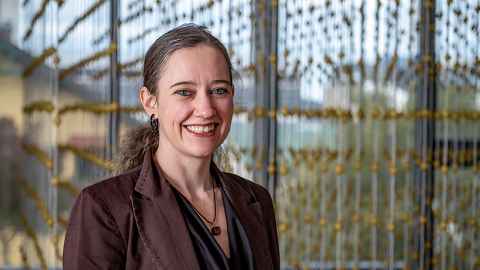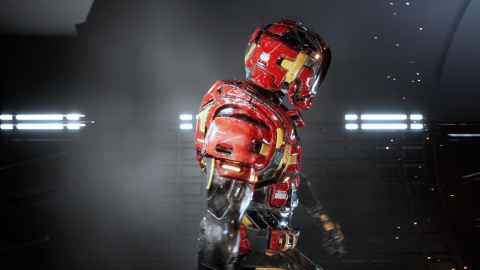From babies' bedsides to bioengineering
04 September 2024
There are many ways to improve outcomes for premature babies, says new PhD graduate Robyn May. She chose “sexy maths and statistics”.

Robyn May was on a ward round at Port Shepstone hospital outside Durban in South Africa in 2011 when her phone rang and an unknown voice told her she’d won a trip to New Zealand to attend the Rugby World Cup.
She hung up quickly – talking on the phone on shift was seriously frowned upon unless it was a patient emergency – and this was obviously a crank call.
Except it wasn’t. There had been a prize draw at an event she’d attended some time before. And against all the odds, Robyn and her husband had won a trip to Aotearoa. That week-long visit ignited a spark that was to lead, albeit a few years down the track, to the couple moving to New Zealand for good.
Robyn’s first job in Auckland was as project manager in maternal and perinatal clinical research under Distinguished Professor Dame Jane Harding – someone she describes as “an incredibly inspirational mentor”.

Robyn was enjoying her clinic work in paediatrics, but was becoming increasingly excited about research.
“I loved paediatrics – the colourful, chaotic, cacophonous ward; the muted, dimly-lit, soothing NICU [neonatal intensive care unit] where the tiniest, most vulnerable newborns quietly got on with the Herculean job of surviving. And yet, and yet… I also wasn’t the usual clinician.”
As a clinician she missed numbers and maths and thought coding looked “an awful lot of fun”. And as a sci-fi enthusiast from way back, bioengineering looked like her best chance of turning science fiction into science fact.
“Like most sci-fi geeks, what I really wanted was to build the Iron Man suit,” she says, referring nostalgically to the self-repairing, self-propelling exoskeleton worn by Tony Stark in the movie series. “But of course it wasn’t quite as easy as that!”

When, in 2020, Robyn decided to commit to academia and do a PhD, she chose a project which brought together her two passions: paediatrics and bioengineering.
In a collaboration between the Auckland Bioengineering Institute and the Liggins Institute, her doctoral research involved developing newborn cardiovascular digital twins; physics-based computational models of the heart and blood vessel systems for individual newborn babies.
If the title of her thesis – "Understanding cardiovascular remodelling related to preterm birth: A clinical and computational modelling study" – sounds complicated, that’s because the research is leading edge.
First, Robyn turned to the hospital, collecting ultrasound data on the hearts of term and premature babies after birth, and following them up between three and six weeks of age.
Then for each baby where she had ultrasound data, she created a personalised model simulating how that baby’s heart was beating and how blood flowed through their bodies. The aim is that these cardiovascular digital twins could one day aid decision-making when taking care of preterm babies in NICU; they have already proved themselves as a research tool to investigate differences in those born preterm that might predispose them to cardiovascular disease later in life.
“These are some of the largest subject-specific computational modelling studies, and the first in early life,” she says.
There are many ways to be a doctor.
Robyn won’t be graduating in person – instead she’ll spend much of September in Germany, having won a Maurice and Phyllis Paykel Trust travel grant to present her newborn cardiovascular digital twins at two conferences: Computing in Cardiology, and the Virtual Physiological Human.
“I enjoy the chance to present at bioengineering conferences as a clinician, bringing a more translational perspective of how digital twins can actually make a difference in clinical care.”
Then it’s back to the Liggins Institute as a Research Fellow working with Jane Harding on the long-term consequences of perinatal events using various modelling approaches.
When reflecting on an unconventional path to academia, Robyn echoes the words of Professor Martin Kussman: “A science career plan does not make sense”, and Dr Catherine Mohr: “There are many ways to be a doctor.”
Meanwhile, she is “absolutely delighted to be able to contribute to better outcomes for babies from behind a desk using sexy maths and statistics”.
Media contact
Nikki Mandow I Research communications
Mob: 021 174 3142
Email: nikki.mandow@auckland.ac.nz